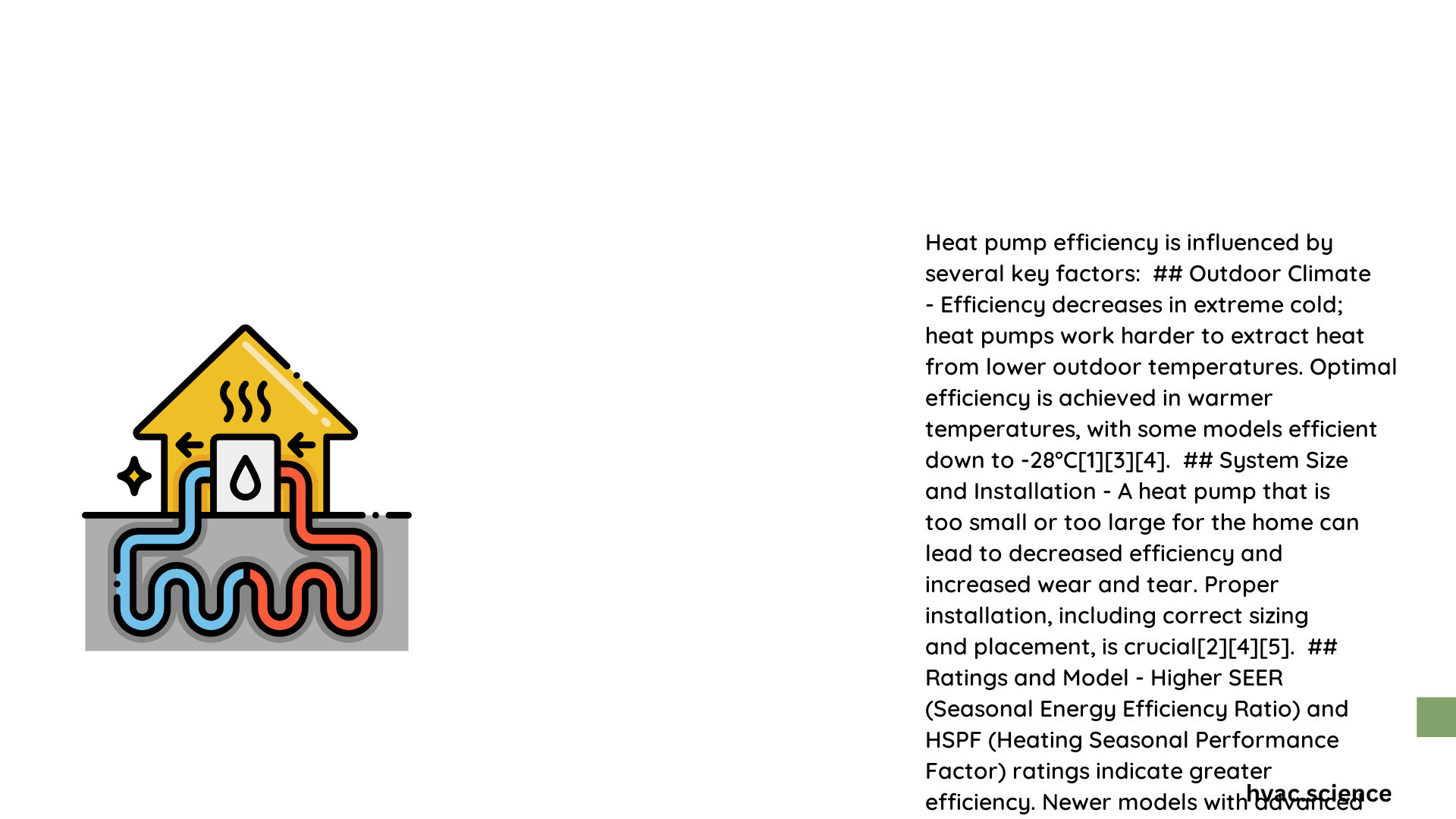Heat pump efficiency is a complex interplay of multiple technical and environmental factors that directly impact energy consumption, performance, and operational costs. Understanding these variables can help homeowners and professionals optimize heat pump systems, reduce energy expenses, and maximize thermal comfort across diverse climate conditions.
What Determines Heat Pump Performance Metrics?
How Do Refrigerant Types Impact Efficiency?
Refrigerant selection plays a crucial role in heat pump performance. Different refrigerant compositions significantly influence thermal transfer capabilities and overall system efficiency.
Comparative Refrigerant Performance
| Refrigerant Type | Ozone Depletion Potential | Efficiency Rating | Environmental Impact |
|---|---|---|---|
| R-410A | Zero | High | Low |
| R-22 | Moderate | Low | High |
| R-32 | Minimal | Very High | Low |
Key observations about refrigerant efficiency:
– R-410A offers superior heat transfer properties
– Modern refrigerants prioritize environmental sustainability
– Higher efficiency correlates with reduced energy consumption
What Role Does Outdoor Temperature Play?
Temperature dramatically influences heat pump performance across different operational modes:
Temperature Efficiency Thresholds
- Below 32°F (0°C): Significant efficiency reduction
- 32-60°F (0-15°C): Optimal performance range
- Above 90°F (32°C): Increased energy consumption
Performance Metrics
- Cooling Mode (SEER):
- Calculated by total cooling output divided by electrical energy input
- Minimum current standard: 14.3 SEER2
-
Efficiency decreases with extreme temperatures
-
Heating Mode (HSPF):
- Measures heating efficiency across seasonal variations
- Typical range: 7.5 – 10 HSPF
- Performance declines rapidly below freezing temperatures
How Do Airflow Restrictions Affect System Performance?
Airflow represents a critical efficiency determinant in heat pump operations:
Key Airflow Considerations
- Duct Sizing: Proper dimensions prevent pressure drops
- Filter Selection: Balance between air quality and system performance
- Obstruction Management: Minimize resistance in air circulation paths
Airflow Impact Calculation Example
Reduced Airflow (15%) → Efficiency Decrease: 10-12%
Blocked Vents → Energy Consumption Increase: Up to 25%
What System Design Elements Influence Efficiency?
Critical design factors include:
– Compressor technology
– Heat exchanger surface area
– Insulation quality
– Control system sophistication
Practical Efficiency Optimization Strategies
- Regular maintenance
- Professional system sizing
- Appropriate refrigerant selection
- Strategic thermostat programming
- Comprehensive home insulation
Technical Recommendations

- Prioritize systems with SEER ratings above 16
- Choose environmentally friendly refrigerants
- Implement zonal temperature control
- Invest in professional installation
Conclusion
Heat pump efficiency emerges from a complex interaction of technological, environmental, and design factors. Systematic understanding and strategic management can significantly enhance performance and energy savings.
